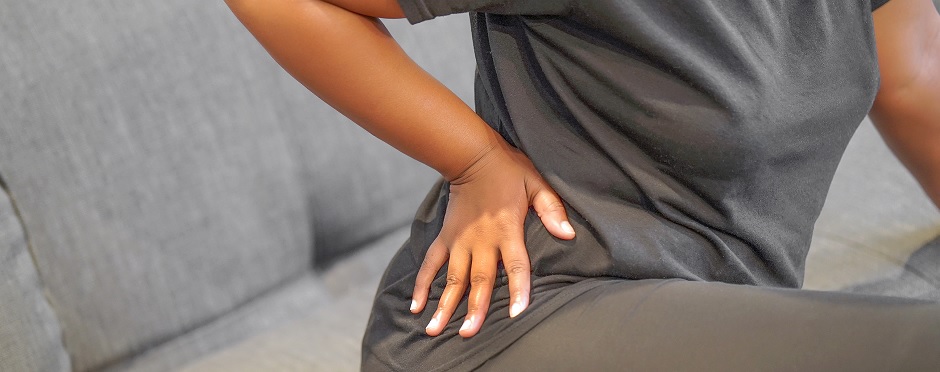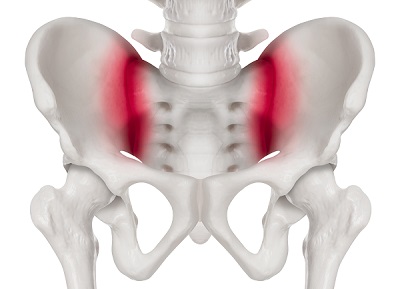
What You Need to Know about Sacroiliac Joint Pain
Leave a CommentMany people experience back pain and, as you may know, symptoms can vary. Sometimes back pain is sharp and located off to one side. Pain can also be isolated to the low back or travel into the buttock or down the leg. Oftentimes, pain occurs with certain positions or movements. Although the source of back pain can be located in the lumbar spine, it can also be related to a joint where the spine meets the pelvis, called the sacroiliac joint.
What is the Sacroiliac Joint?
The Sacroiliac (SI) joint is where the flared bones of the pelvis meet the sacrum or base of the spine. There are two SI joints, one on the left and one on the right. You may notice “dimples” on either side of your low back which approximate where both SI joints are located. The primary function of the SI joint is to absorb shock between the upper body and the pelvis and legs. Small movements at these joints assist in forward and backward bending.

Pain at the SI Joint
- Too much movement at this joint can lead to feeling unstable and pain. Pain is usually felt in the low back or hip and may radiate to the groin.
- Too little movement at this joint can lead to muscle tension and pain. Pain is usually felt on one side of the low back or buttock.
Causes of SIJ Dysfunction
- A fall onto one side of the body
- Too much stress on the joint, such as over training in an athlete or a recent increase in activity levels
- Poor sitting posture for prolonged periods
- Muscle imbalances
Symptoms of SIJ Dysfunction:
- Low back pain that can be dull, aching, ranging from mild to severe. Typically located on one side but in some instances may be felt on both sides
- Pain that spreads to the buttock, hip, or groin
- Stiffness and decreased range of motion in low back and hips which can make climbing stairs or bending at the waist difficult
- Worsened pain with pressure on the SI joint such as lying on one side, climbing stairs, or jogging
- Instability in pelvis or low back which can feel like it will give way when standing, walking, or moving from standing to sitting
- Pain with movements such as moving from sit to stand, turning in bed, bending, or twisting
- Muscle tightness or tenderness in hip/buttock region
Physical Therapy for SIJ dysfunction
Physical therapy can assist with SIJ dysfunction by focusing on stretching and pain relief to the low back and buttock area. Many times, muscle tension contributes to the pain levels for SIJ dysfunction. By addressing these tight muscles, you can potentially decrease your pain. After mobility is improved, strengthening to the muscles in the low back, hips, and buttocks can provide stability to these joints. Physical therapists are movement experts who can help evaluate and plan an individualized program for each person to treat their specific symptoms and muscle imbalances.
Request your free assessment at an Athletico today and get started. Free assessments are available in-clinic and virtually through our Telehealth platform.
Physical therapy is usually the thing you are told to do after medication, x-rays or surgery. The best way to fix your pain is to start where you normally finish – with physical therapy at Athletico.
The Athletico blog is an educational resource written by Athletico employees. Athletico bloggers are licensed professionals who abide by the code of ethics outlined by their respective professional associations. The content published in blog posts represents the opinion of the individual author based on their expertise and experience. The content provided in this blog is for informational purposes only, does not constitute medical advice and should not be relied on for making personal health decisions.
